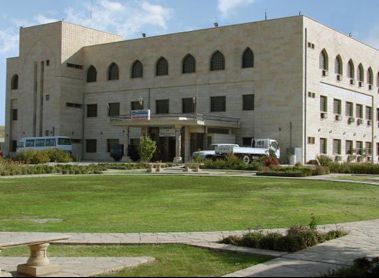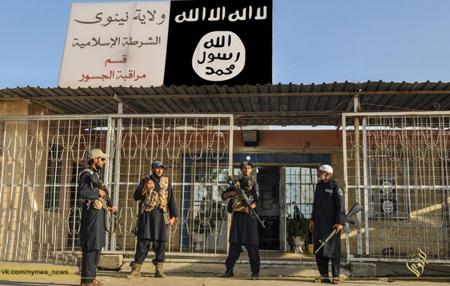Two months later, a national news agency (AGI, Dec. 1) informs us that "a British jihadist claimed on the web that Isis is in possession of a so-called" dirty bomb ", made with 40 kg of uranium stolen from the deposits of the University of Mosul ”, news also reported by the“ Daily Mail ”.
Indeed, “The Independent” in July announced that Ambassador Mohamed Ali Alhakim to the United Nations had informed that jihadists had stolen nuclear materials used for scientific research at a university in northern Iraq. In particular, there was talk of almost 40 kilograms (88 pounds) of uranium derivatives that were stored right in Mosul.
For years there has been talk of possible "dirty IEDs" but until now there was no certainty that subversive groups could have access to unconventional substances to increase the conventional effects of bombs. The news, however, of the radioactive material stolen in Mosul makes it possible that in the world there are possible sources of supply of NBC agents (Nuclear, Biological and Chemical) easily accessible by the jihadist forces.
Biological agents such as anthrax or Botox produced in the secret laboratories of Saddam Hussein. Radioactive substances from the nuclear arsenals of the dissolved Soviet Union or even radiological waste for sanitary use set aside in the basements of hospitals destroyed in Iraq, Syria and even in Bosnia Herzegovina. Chemical aggressors smuggled to the West via Third World countries, among those that are notoriously the final destination for toxic waste from industrialized nations or old disused military arsenals.
A "dirty bomb", in fact, is nothing more than a device made with conventional explosives surrounded by a more or less consistent layer of radioactive waste, even recovered from old X-ray machines for medical use or with the addition of lethal chemicals. for civil use. Material certainly not capable of triggering a nuclear explosion or a significant chemical toxic cloud, but capable of propagating a fall-out by contaminating large areas. An IED that would have devastating effects if detonated in a big city.
 Unlikely attacks in the past due to the logistical difficulties of finding the necessary materials. More likely, now, when the forces of ISIS may have access to procurement sites for unconventional materials and can refer to the availability of "Western" sympathizers who may possess adequate specific skills. Conditions that exponentially increase the risk that what was once considered unlikely and that, today, however, is something feasible.
Unlikely attacks in the past due to the logistical difficulties of finding the necessary materials. More likely, now, when the forces of ISIS may have access to procurement sites for unconventional materials and can refer to the availability of "Western" sympathizers who may possess adequate specific skills. Conditions that exponentially increase the risk that what was once considered unlikely and that, today, however, is something feasible.
Moreover, to obtain devastating effects, large quantities of material are not needed. A few liters of aggressive chemical or a few kilograms of radioactive substances are sufficient to increase the potential of an IED exponentially.
The threat of IEDs "soiled" with radioactive or chemical material could also present the bacteriological threat on the world stage. Something that dates back to a long time ago, when in the mid-eighteenth century smallpox-infected blankets were distributed to redskins and the British in New Zealand made groups of prostitutes infected with syphilis available to the Maori. Or, when in Cambodia and North Korea it was used the "yellow rain" obtained with a mycotoxin obtained from the Fusarium mushroom. Today, we may have suicide bombers infected with highly spread viral diseases such as Ebola and smallpox.
The alarm raised in recent days should therefore represent a matter of careful monitoring at the institutional level as it is no longer an imaginary subject but a possible eventuality. In fact, the phase of a non-violent, but subtle, terrorism may have already begun, difficult to deal with if you are not prepared to do so.
First of all, it would be desirable to manage official information in favor of the primary objective of every terrorist attack, the civilian population, proposing, if necessary, defense models borrowed in a modern key from what Israel implemented during the Gulf War when it was threatened by Saddam Hussein's unconventional attacks. Not by spreading panic, but by managing the problem day after day with the utmost transparency, relying on constructive communication campaigns aimed at disclosing the defense procedures and making people accept any restrictive measures including personal freedom, which could be implemented as a guarantee of collective security.
Coordinated initiatives at institutional level, which would certainly contribute to breaking down the success of the media campaign with which the Caliphate proposes the unconventional terrorist threat and at the same time would help to sensitize the population so that, if necessary, it is able to face the danger.
Fernando Termentini
(photo: opening of a new ISIS police station in Mosul; followed by the university from which radioactive material was to be taken)












